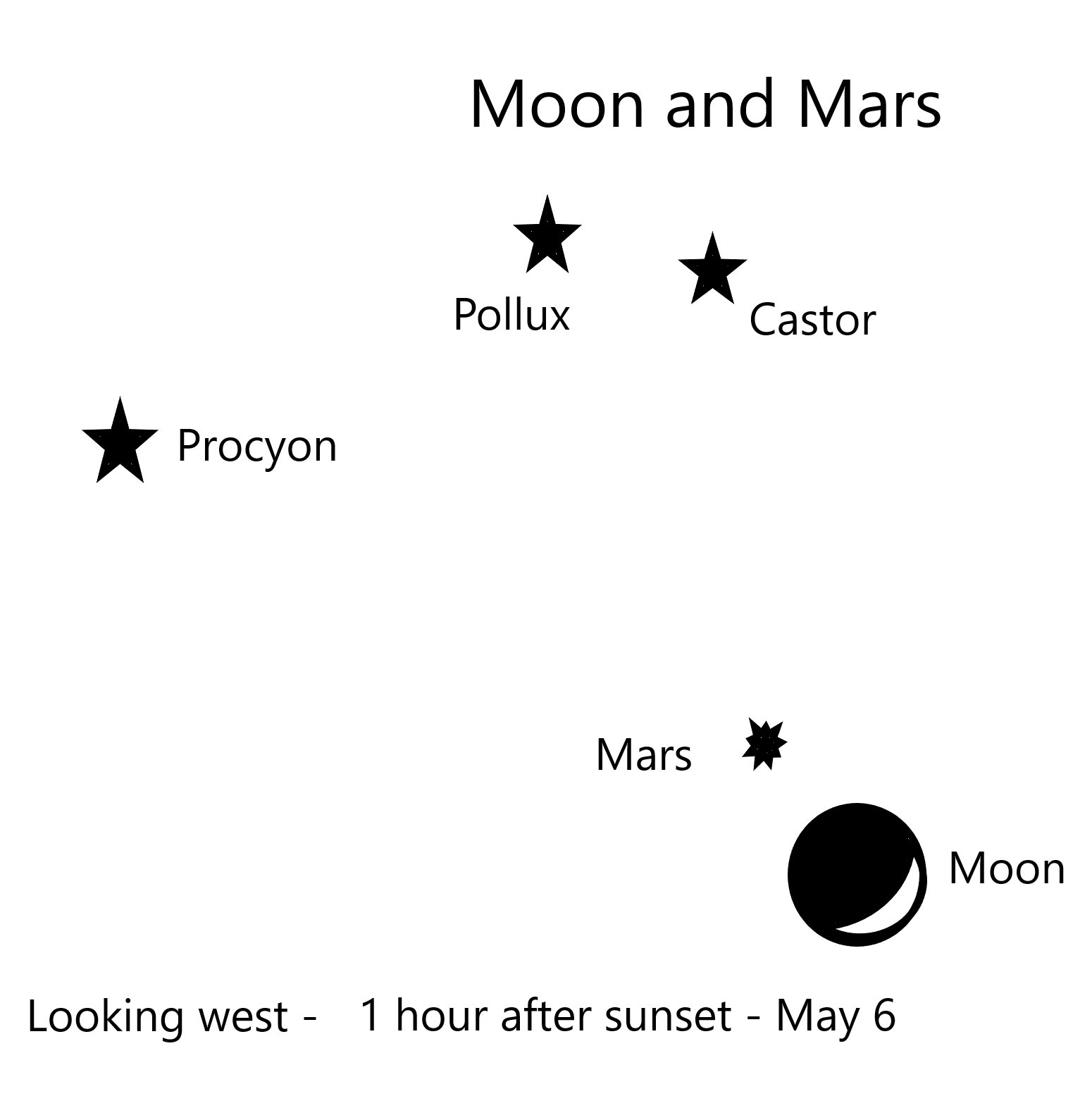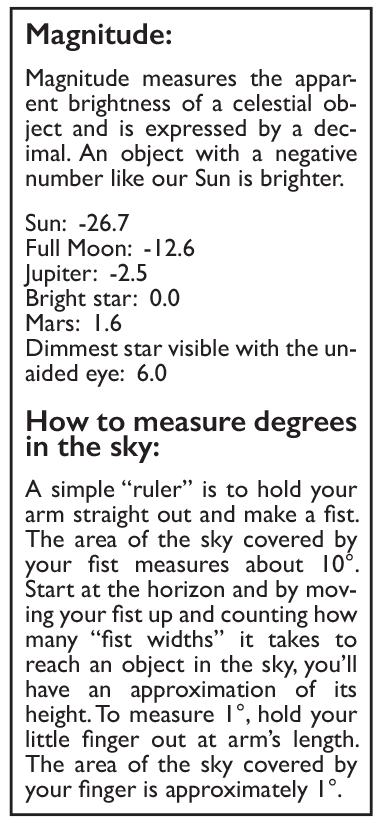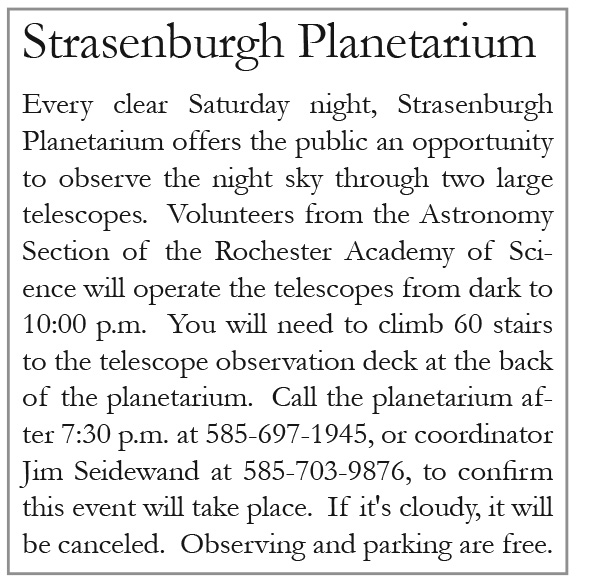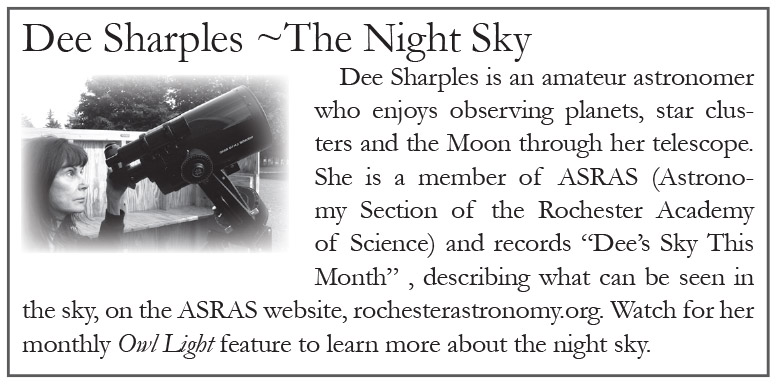The Night Sky – May

by Dee Sharples –
When I saw the picture of the first ever direct -image of a Black Hole on the front page of the newspaper on April 11th, I was awestruck. Eight ground-based radio telescopes in different locations around the globe, with over 200 researchers working in coordination, had created what was virtually equivalent to an extremely sensitive Earth-sized telescope called the Event Horizon Telescope (EHT). It was aimed at a Black Hole in the center of Messier 87, a galaxy 55 million light years from Earth and had captured this image. A light year is a measurement of distance through space and one light year equals approximately six trillion miles!
I felt the same way 50 years ago when Apollo 11 landed on the Moon. On July 20, 1969, as I watched that fuzzy TV image being transmitted to Earth, I was amazed that I was witnessing mankind’s first step onto the surface of another celestial body.
Science and astronomy have seen giant accomplishments in those 50 years. Several spacecraft have orbited and landed on Mars, providing a treasure-trove of scientific data about a planet that in some ways seemed similar to Earth. The Huygens space probe landed on Titan, one of the moons of Saturn, and transmitted data from the surface for almost 30 minutes while its mothership, Cassini, orbited the planet for 13 years. Space agencies have launched other spacecraft such as Voyagers 1 and 2, Messenger, and New Horizons to visit all the planets in our solar system. The twin Voyager spacecrafts continue today to travel into interstellar space, still transmitting data after more than 40 years of operation! Scientists using various methods have confirmed almost 4,000 Exoplanets orbiting distant stars in our own Milky Way galaxy.
And I still feel awestruck when I look up at the night sky and absorb the beauty, contemplating the unfathomable mysteries it still hides.
In May, you can look up at the sky from your own special spot on Earth and find the planet Mars with your naked eye. No special equipment needed. Mars will appearabout 30 degrees high in the western sky after the Sun sets looking like an orange star at magnitude 1.6. On May 6, a slender crescent Moon sits below Mars. On May 7, a slightly larger crescent will be 3 degrees toward the south.
At the beginning of the month, the giant planet Jupiter is extremely bright, shining like a magnitude -2.5 star when it rises in the southeastern sky shortly after 11:00 p.m. Jupiter continues to brighten throughout the month and by the end of May can be seen much earlier, low in the southeast as twilight ends and the sky darkens.
Eta Aquariid meteor shower
This month the Eta Aquariid meteor shower arrives under a dark Moon-free sky so if it’s clear, we should see a great display. Up to 40 meteors per hour may shoot across the sky in the early morning hours on the peak date of May 6. The best time to look for them is around 4:00 a.m. when Aquarius, the constellation from which the meteors will appear to originate, lies about 25 degrees high in the eastern sky before day break.
Meteors are caused by bits of debris left behind by a comet which has previously swung around our Sun on one of its many long orbits into and out of the solar system. With the Eta Aquariid shower, this debris was left behind by Comet 1P/Halley. Each year when Earth travels through this debris stream, the particles burn up in our atmosphere and produce the “shooting stars” we see streaking across the sky. If the sky is predicted to be clear, set your alarm, relax outside in a comfortable lawn chair, and enjoy the show.

